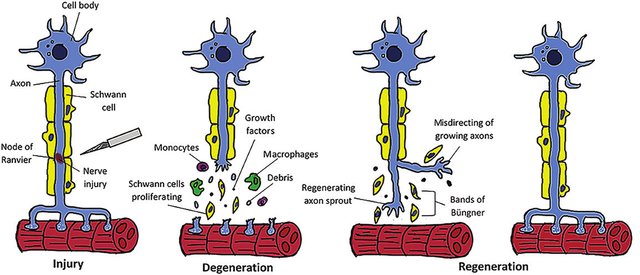Motor march phenomenon is a sign of reinnervation like Hoffman-Tinel’s sign which has been discussed earlier. Observed in: Axonotmesis Repaired Neurotmesis Not observed in: Neuropraxia Motor march phenomenon: As the re-innervation of injured nerve proceeds, the muscles nearest to the site of injury recovers first followed by distal ones sequentially…
Tag: Nervous system
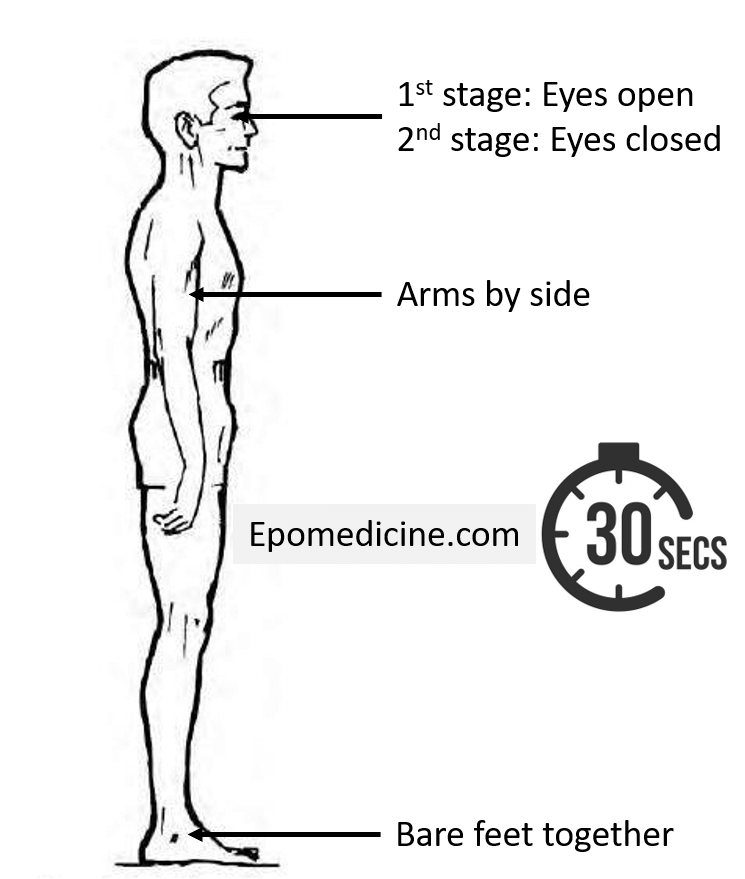
Romberg test
Tests the function of: Posterior or Dorsal column which may be impaired in: Subacute combined degeneration (SCD) of spinal cord (Vitamin B12 deficiency) Posterior cord syndrome (Posterior spinal artery infarction) Hemisection of spinal cord (Brown Sequard syndrome) Pathophysiologic basis: When the patient is standing with the eyes open, visual, proprioceptive,…
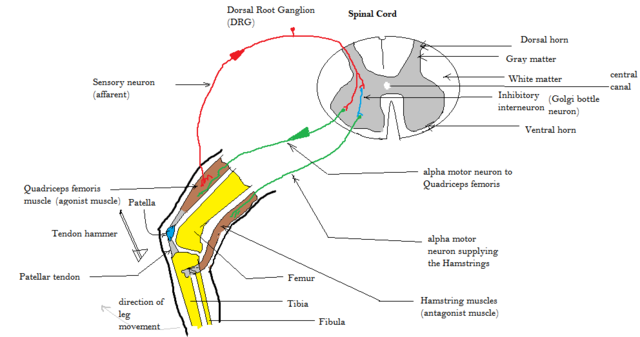
Deep tendon reflexes
Deep tendon reflexes are monosynaptic reflexes integrated at lamina IX of the spinal cord. Deep tendon reflexes may be interpreted as: Normal Diminished or absent (hyporeflexia): Lower motor neuron lesions Exaggerated or clonus (hyper-reflexia): Upper motor neuron lesions Inverted or paradoxical: Damaged afferent pathway Name Spinal level Peripheral nerve Location…
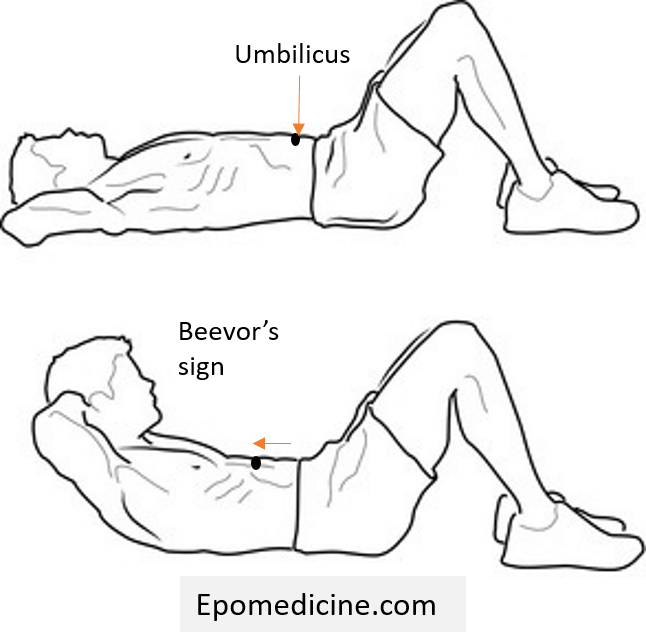
Beevor’s sign
Named after: Charles Edward Beevor Definition: Upward (Cephalad) movement of the umbilicus in a supine patient attempting either to flex the head onto the chest against resistance or performing a sit-up. It is not a pathologic reflex, but a sign resulting from imbalance in muscle strength between the upper and…
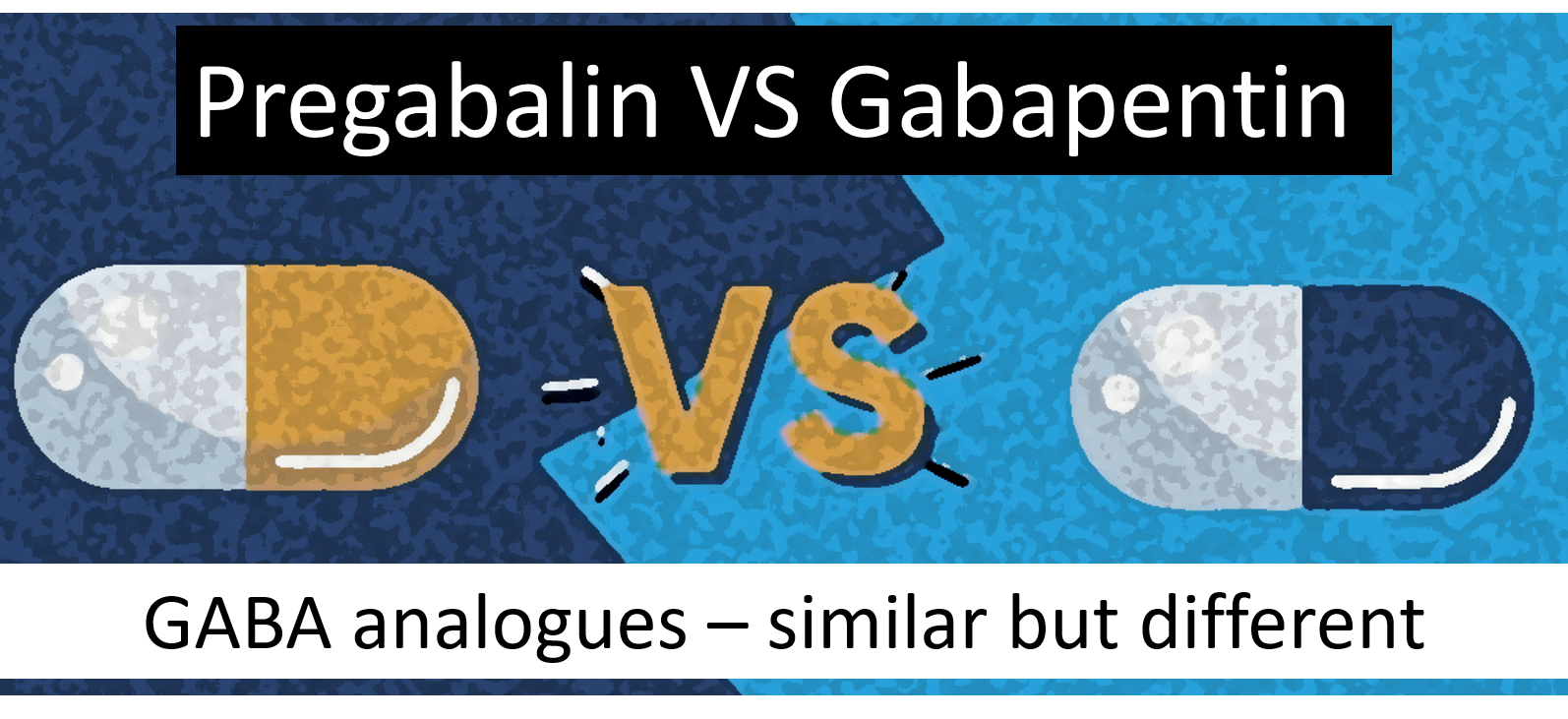
Pregabalin vs Gabapentin
Both pregabalin and gabapentin are GABA analogues that bind to presynaptic neuron’s voltage-gated calcium channels (VGCC), specifically to the alpha-2-delta protein leading to reduced calcium influx at the nerve terminals. This leads to reduced release of excitatory neurotransmitters. Though the compounds are similar they have few important differences that must…
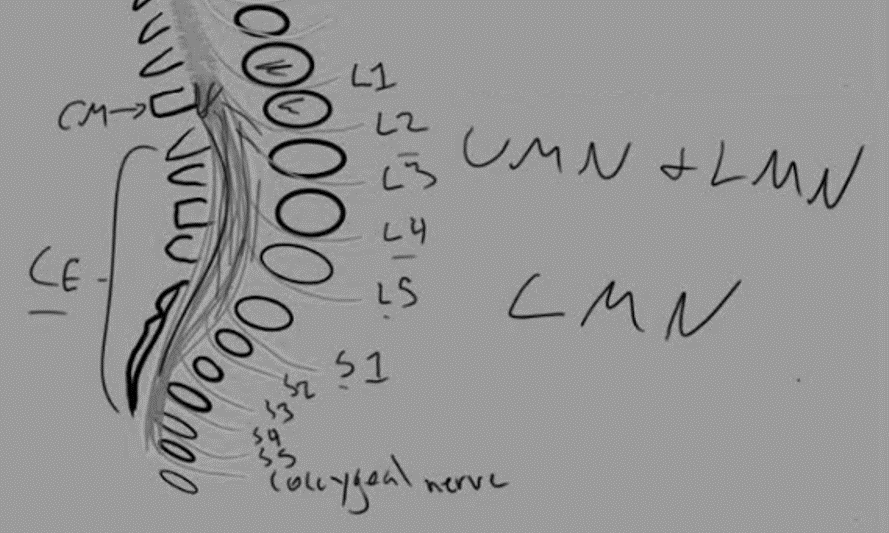
Conus Medullaris Syndrome vs Cauda Equina Syndrome : Anatomical basis and Mnemonic
Definitions Condition Vertebral level of injury Neurological level of injury ISNCI level of injury Conus Medullaris Syndrome (CMS) T12-L2 T12-S5 T11 Cauda Equina Syndrome (CES) L3-L5 L3-S5 L2 Anatomy The spinal cord ends as a tapered structure called the conus medullaris at the level of L2–L3 disc in the neonate…
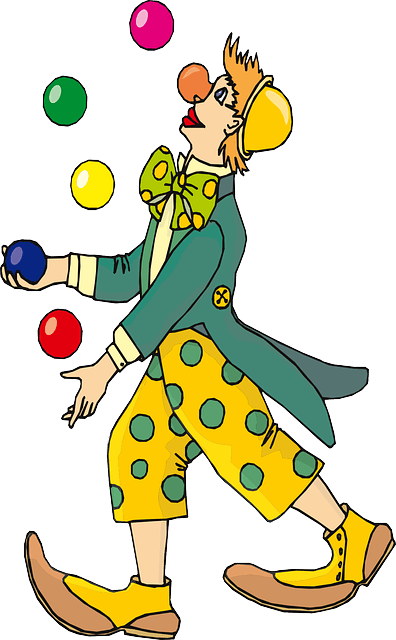
Modified Ashworth Scale for Spasticity : Mnemonic
Ashworth scale tests resistance to passive motion about a joint with varying degrees of velocity. Modified Ashworth Scale (Bohannon and Smith, 1987) has 1+ grading between grades 1 and 2. Modified Ashworth Scale (Ansari et.al., 2006) has been described here. Mnemonic: Ashworth is a juggling clown 0 : 0 is…
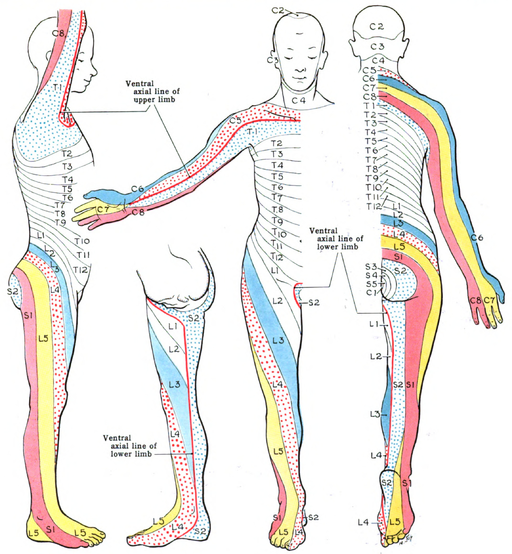
Dermatomes : Mnemonic
Note: C1 doesn’t have a sensory branch For the purpose of making learning easier, we divide the remaining dermatomal segments into 4 groups which will be accompanied by analogies and mnemonics. C2-C4 These supply the “hooded cape” region. C2: hood region abutting the trigeminal distribution C3: upper neck C4: lower…
